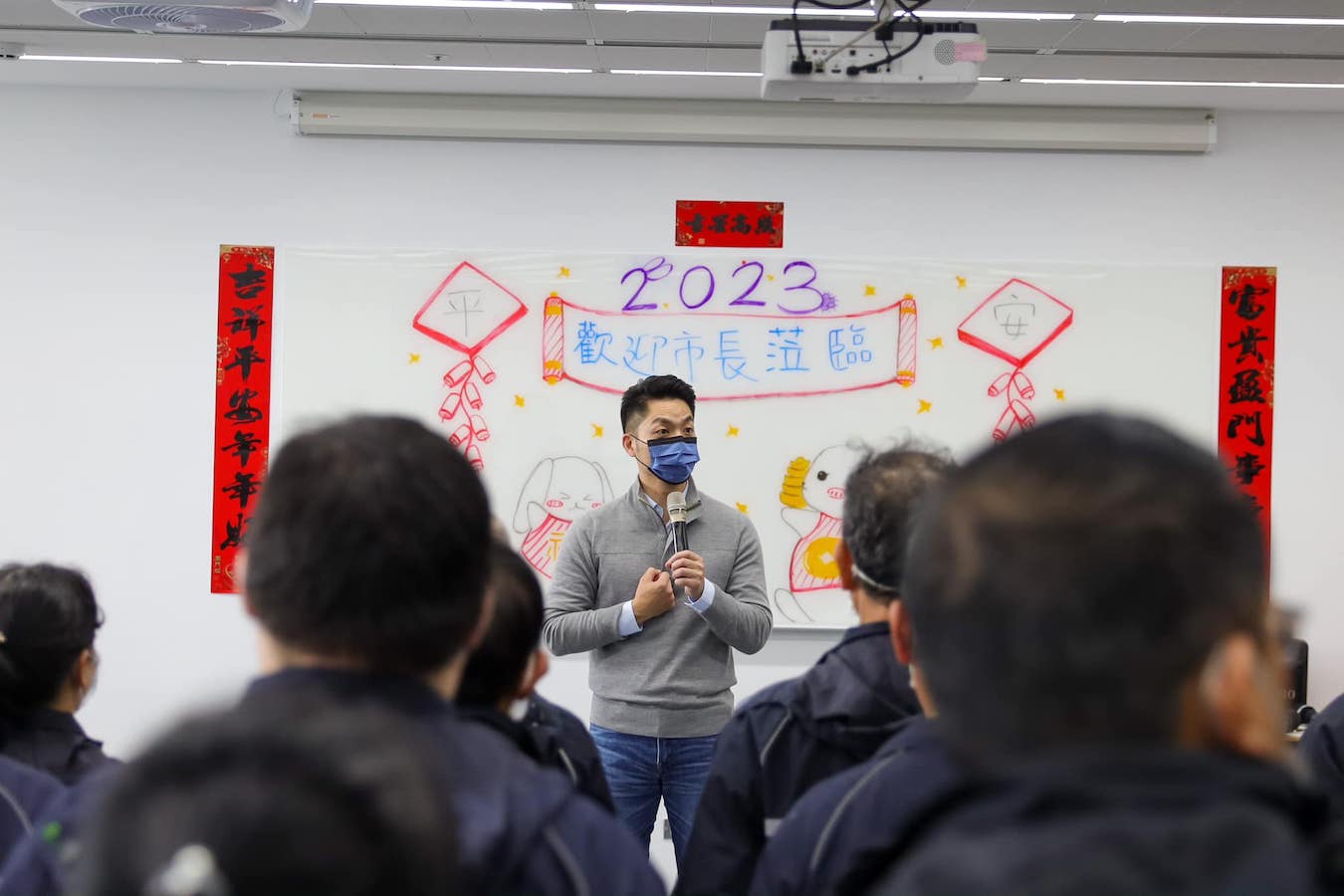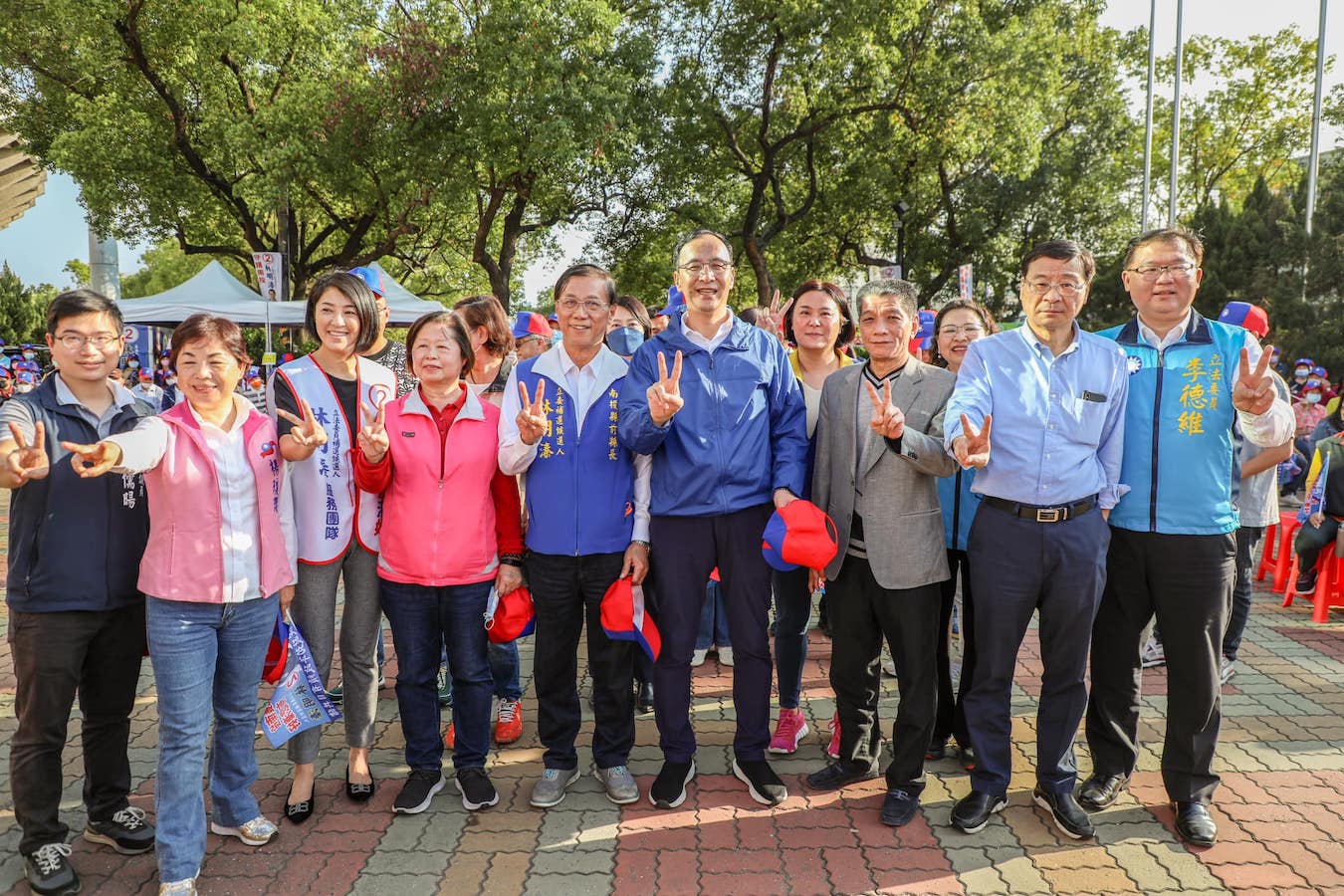by Brian Hioe
語言:
English
Photo Credit: Eric Chu/Facebook
KMT DEPUTY CHAIR Andrew Hsia’s nine-day trip to China ended on the 17th, with Hsia seeing protests by pro-independence groups such as the Taiwan Statebuilding Party upon his return.
Coincidentally, Hsia’s return took place in the same timeframe as the first visit to Taiwan by Chinese government officials since the start of the COVID-19 pandemic, which took place for city-based cross-strait exchanges under the mayoral administration of Chiang Wan-an. These visits also saw protests by the same groups, with concerns raised about the Taipei mayoral administration not publicizing the schedule for these trips–something criticized as possibly allowing for secret meetings.
Hsia’s recent trip to China is not the only visit to China by him in recent memory. Hsia also visited China after the Pelosi visit, following the live-fire exercises that China conducted around Taiwan in response to the Pelosi visit. The live-fire exercises took place closer to Taiwan than during the Third Taiwan Strait Crisis, while Pelosi was the first US Speaker of the House to visit Taiwan in 25 years.
 Taipei mayor Chiang Wan-an. Photo credit: Chiang Wan-an/Facebook
Taipei mayor Chiang Wan-an. Photo credit: Chiang Wan-an/Facebook
Hsia’s first trip to China, in the wake of the live-fire exercises, was surprising because this took place at a time that KMT chair Eric Chu was touting efforts by the party to change its pro-China image. With the reopening of the KMT’s Washington DC office, which had been closed under the Ma administration, Chu hoped to depict the KMT as a pro-US party, citing historical precedents going back to the Chiang era. At the time, younger members of the KMT issued an open letter against the trip, suggesting that the timing would cause the KMT to continue to be seen as a pro-China party.
Yet Hsia’s visit to China raised questions. For one, the trip seemed to undercut Chu’s pivot to the US. This led to speculation as to whether Hsia decided to go on his own, against Chu’s wishes, or whether this was in coordination with Chu. If this was deliberate, Chu may have decided that conducting meetings with Chinese officials after the live-fire exercises would reinforce its traditional claim to be the only political party in Taiwan able to communicate with the CCP–something it has historically leveraged on for election campaigning.
What raised eyebrows about Hsia’s most recent trip, however, is that he met with not only newly appointed Taiwan Affairs Office head Song Tao, but CCP chief ideologist Wang Huning. The meeting with Wang is unusual, though it is expected that Wang intends to take a more active role in Taiwan-related affairs going forward. Wang will soon take up a position as chairman of the National Committee of the Chinese People’s Political Consultative Conference and deputy head of the Central Leading Group for Taiwan Affairs.
It was speculated that Hsia’s meeting with Wang might result in a new formula for cross-strait relations, superseding the 1992 Consensus. Yet this did not take place. Ultimately, the official statements from the KMT and CCP after the meeting just emphasized adherence to the 1992 Consensus, though it is not impossible that some new formula for cross-strait relations does emerge down the line.
But it proves interesting to note that members of the pan-Green camp have sought to depict Hsia’s trip to China as being at Eric Chu’s behest. One can see this, for example, in statements by DPP legislator Lo Chih-cheng framing the visit as intended to bolster Chu’s credentials ahead of a 2024 run. Namely, though Chu promised that he would not run himself as the KMT’s 2024 presidential candidate and instead that he would cultivate the strongest possible candidate for the KMT, it is thought that he may still harbor presidential ambitions. Likewise, while New Taipei mayor Hou You-yi is generally thought of as the KMT’s strongest possible presidential candidate, poor relations between Chu and Hou may also contribute to Chu running himself instead of Hou.
 KMT chair Eric Chu. Photo credit: Eric Chu/Facebook
KMT chair Eric Chu. Photo credit: Eric Chu/Facebook
It is to the pan-Green camp’s advantage to accentuate internal splits within the KMT and so, in this way, framing Hsia’s visit to China as meant to benefit a Chu run may also be with this strategic aim in mind. Hsia’s visit to China, then, is positioned as Chu seeking the approval of China before a prospective presidential run. Or Chu sending Hsia to visit China may be to boost his standing within the KMT, as part of moves aimed at strengthening his position to seek the presidential nomination.
Indeed, one notes that some members of the KMT may see Hou as too moderate on cross-strait issues and historically too close to the pan-Green camp to be a suitable candidate. This is particularly the case with the deep blue wing of the party being increasingly strident in past years, as was particularly visible in Han Kuo-yu’s 2020 presidential run. As such, though Chu was historically a moderate in the party, at present, he would also need the support of the deep blue wing of the KMT if he wishes to be the KMT’s presidential candidate. This would be one explanation for Hsia’s trip to China, then, if it did occur at Chu’s behest. Yet that being said, it is unsurprising either that the pan-Green camp would frame the visit as with this end in mind to weaken the KMT’s position ahead of 2024 elections.

